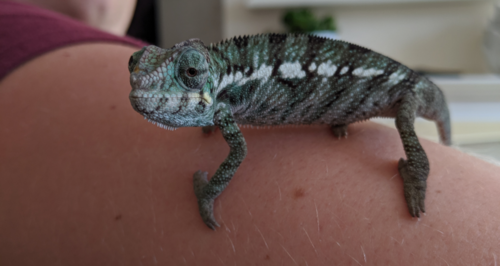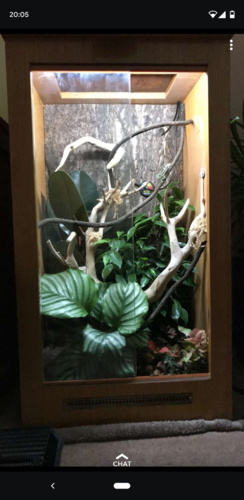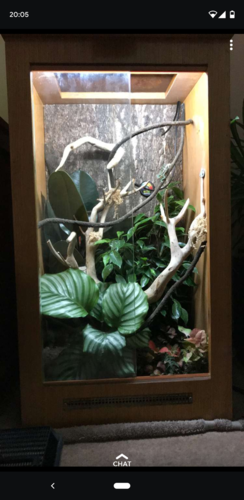Kleynie
Member
Hi all,
I joined the forums this morning to ask a question about my new 3 month old Nosy Be panther chameleon. His name is Zeus I got him on Tuesday this week from a trusted local breeder (specifically Global Geckos in Windlesham), and he has seemed to settle in really well overall, he seems happy in his vivarium and loves to explore, he also seems to enjoy being handled for short periods of time, which was a surprise to me. Anyway, to get to the point of this post, since yesterday, he hasn't eaten his locusts, and I'm not sure why. I have been feeding him 8-10 small/medium locusts a day (he is very fussy and won't eat the meal worms I have tried to feed him), dusting only some of them in Calcium, and he will be getting some multivitamins on them this weekend too. He seemed really happy to eat until yesterday morning, but now he is reluctant to eat them. Any help is appreciated.
Thanks.
I joined the forums this morning to ask a question about my new 3 month old Nosy Be panther chameleon. His name is Zeus I got him on Tuesday this week from a trusted local breeder (specifically Global Geckos in Windlesham), and he has seemed to settle in really well overall, he seems happy in his vivarium and loves to explore, he also seems to enjoy being handled for short periods of time, which was a surprise to me. Anyway, to get to the point of this post, since yesterday, he hasn't eaten his locusts, and I'm not sure why. I have been feeding him 8-10 small/medium locusts a day (he is very fussy and won't eat the meal worms I have tried to feed him), dusting only some of them in Calcium, and he will be getting some multivitamins on them this weekend too. He seemed really happy to eat until yesterday morning, but now he is reluctant to eat them. Any help is appreciated.
Thanks.




